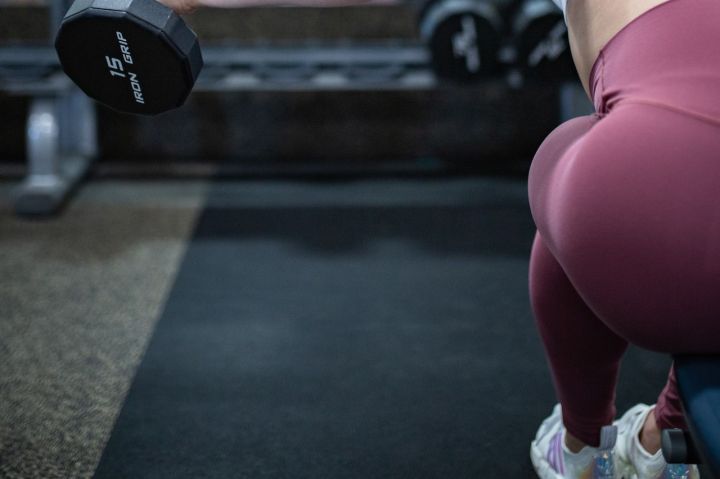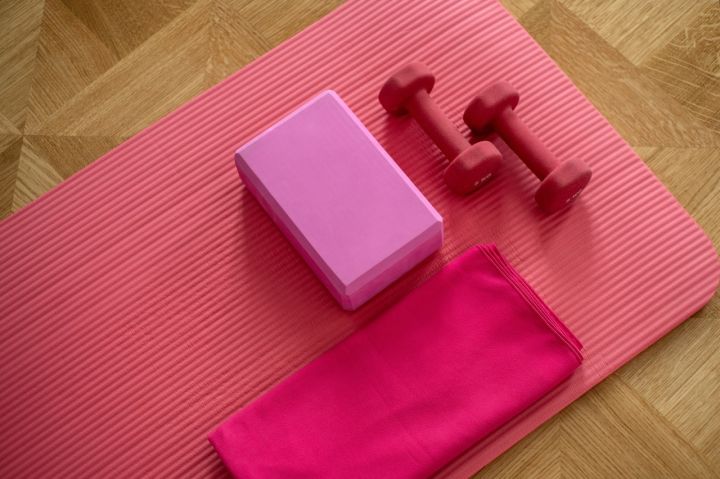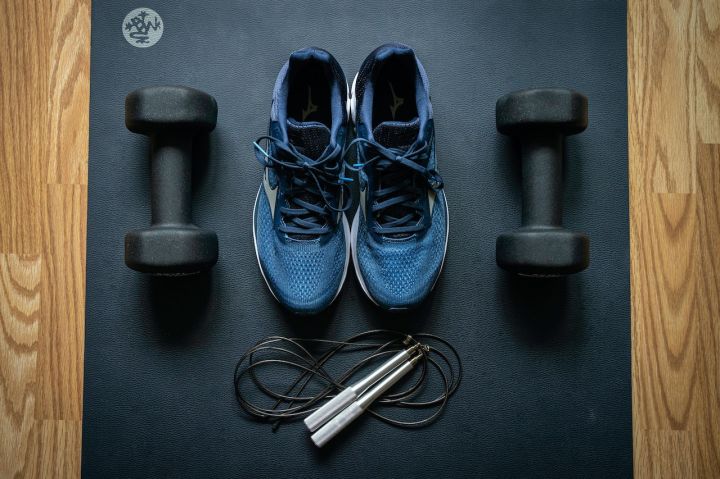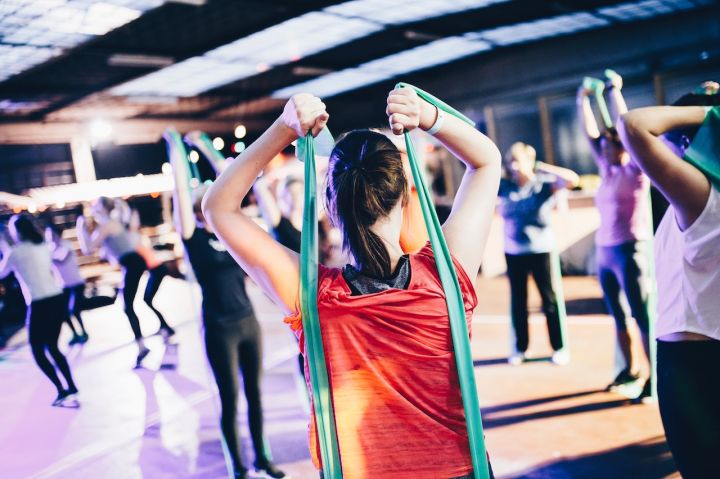do you think butt training is only for girls?
Nowadays, buttocks are no longer the exclusive preserve of women. Both men and women, solid and firm buttocks add a lot of points to the body. It is a golden rule for many people that there is no buttocks without deep squatting. But it doesn't seem cost effective to do difficult squats when you're just running around trying to get a good butt, as the glute bridge you're underestimating would have done.

The glute bridge targets the gluteal muscles, including the gluteus maximus, vastus medius and gluteus minimus. Although it is a simple self-repelling movement, the benefits go far beyond that.
It also works well on the hamstrings, core, lower back, and posterior chain (the back of the body), increases hip strength, prevents/improves lower back pain, and of course, builds a round and shapely butt.

so why settle for squats when all you need is a yoga mat to practice on? Next, we will guide you on how to do the muscles involved in this movement effectively, as well as the very effective variations.
First, let's talk about the glute bridge.
To do the glute bridge, start by lying on the floor with your legs bent, feet flat on the floor (or heels on the floor) and arms at your sides. Then, lift your hips naturally without hyperextending your back, keeping your core muscles tight while squeezing your glutes and hamstrings. Be sure to control the movement so that you can feel the muscles engaged.

it is important to do this movement not with heel power but with hip power until the hips are in a straight line with the torso and thighs to avoid back pain.
The movement is relatively easy, but after a certain number of reps (depending on the individual) it can become quite challenging if done without mistakes. As this is a self-weight movement, the more reps the better.
Muscles exercised and movement benefits
we talked briefly earlier about the muscles that are exercised in the glute bridge. It's a great glute movement and the hip flexors, hamstrings, back and even core muscles are involved. Therefore, in addition to the muscle and strength building side effects, the glute bridge is a functional movement involving several of the above muscle groups.

gluteus maximus.
The gluteus maximus is essential for the extension and external rotation of the thighs and it is also involved in the uprightness of the body. When the body is weak/weak muscles (usually caused by prolonged sitting and inactivity), this can lead to lower back problems. It is therefore also very important to train the hip muscles for physical function.
Hip flexors.
The hip flexors are made up of several different muscles including the rectus femoris, iliopsoas, psoas and iliacus minor. These muscles allow the hip flexors to achieve their function: To join the trunk together and bend the trunk at the point of the hip, together with the rotation and inversion of the thighs.

weak hip flexors can lead to back pain, knee discomfort, poor posture and limited mobility. Just like the gluteus maximus, being sedentary shortens the hip flexors over time, leading to a weaker hip. So if you find you have problems with your hip flexors, it's time to start incorporating movements to strengthen and lengthen this area of the muscle to restore functional health.
Hamstrings.
The hamstrings are antagonistic to the quadriceps, which is made up of three muscles (biceps femoris, semimembranosus and semitendinosus). The function of the hamstrings is to extend the thighs and hips, bend the knees and rotate the shins. So, whether you are walking, squatting or bending, the hamstrings are involved.

back.
The back is made up of several different muscles (rhomboids, erector spinae, latissimus dorsi, rhomboids), each with its own function, including the movement of the shoulders and neck, plus the function of the spine, as well as those related to posture. It is easy to see how the back muscles are involved in movement when doing the hip bridge.
Core muscles.
The core muscles include the abdominal muscles, the obliques, the internal abdominal muscles and even the lower back. These muscles support the spine and torso for stability and they play an important role in almost all movements. Therefore, keeping the core tight while performing movements is very important for the safety of the back and for training form.
The best variations
in addition to the typical double-legged hip bridge, there are some more challenging variations that bring progress and more training results.

single leg hip bridge
the single leg glute bridge is a great move and probably the most popular variation as this move requires no equipment and the glutes have to be pushed harder with each movement. The movement itself is still fairly simple.
To do the single leg glute bridge, lift one leg and straighten it out, parallel to the other leg. Then, using your feet to generate force, lift and squeeze your glutes. Keep your core muscles tight. Then, return the hips to the starting position, one inch off the ground.
A similar variation is to bend the non-working leg and place the foot on the working thigh, instead of straightening the leg.
You can also raise the non-working leg upwards to make the movement more difficult.

(fitness hemisphere) or medicine ball glute bridge
this hip bridge variation is cool and will test your stability. Place your feet on a bosu ball or medicine ball, keeping your core tight and your feet firing, lift and squeeze your glutes. Then, return your hips to the starting position, one to two inches off the ground.
Toe hip bridge
don't put your feet flat on the floor when doing the glute bridge, challenge yourself to keep your toes touching the floor throughout.

weighted glute bridge
to add more resistance to the basic glute bridge, place a dumbbell or kettlebell at the hips.
Hip punch
the glute punch is the absolute cream of the crop when it comes to the glute bridge variation. Doing the glute punch adds weight, which not only builds muscle and strength, but also has much of the same training effect as the glute bridge.

to do the glute punch.
1. Lean your back against a horizontal bench and set the barbell back in hip position.
2. Lift your body up on your elbows until your feet are flat on the floor and your upper body is resting on the bench. Place your feet about shoulder width apart.
3. Hold the barbell firmly so that it is balanced at the hips, eyes straight ahead and chin tucked in.
4. Take a deep breath, tighten your core, step hard on your feet, lift your hips, squeeze your gluteus maximus and then, move down to about 4 inches off the ground.
Keep your calves perpendicular to the floor as you do the glute punch. Look your head forward, this will prevent hyperextension of the back. Lower the hip position to a position that will not interfere with the movement norm, you can prevent this by placing a cushion or similar under your buttocks. Adjust as often as needed. Choose a weight that you can handle while allowing the gluteus maximus to be fully exercised and contracted. But don't be afraid to increase the weight gradually so you can really get the training effect!

we are not denying the usefulness of the deep squat, for many novice trainers it is on the one hand difficult to master and most importantly not economical in terms of efficiency for lifting the glutes. Don't get overly caught up in the equipment spell, glute bridges rely on self weight and you can do them either at the gym at home or even in the office.






